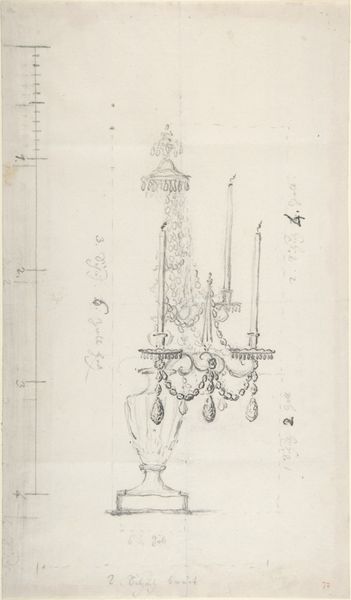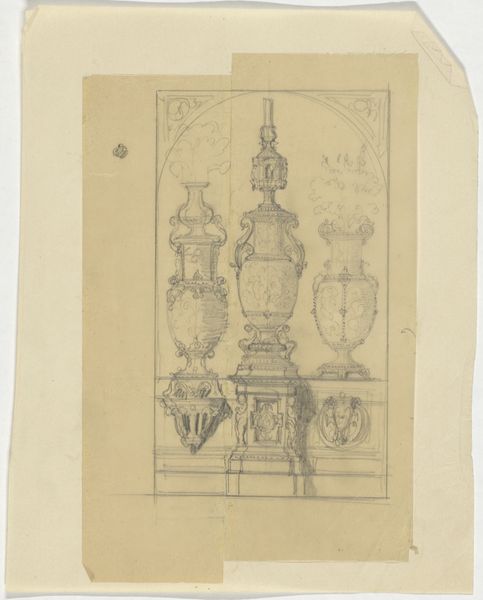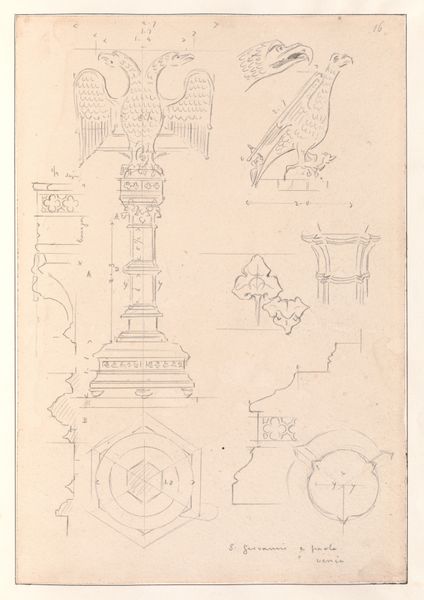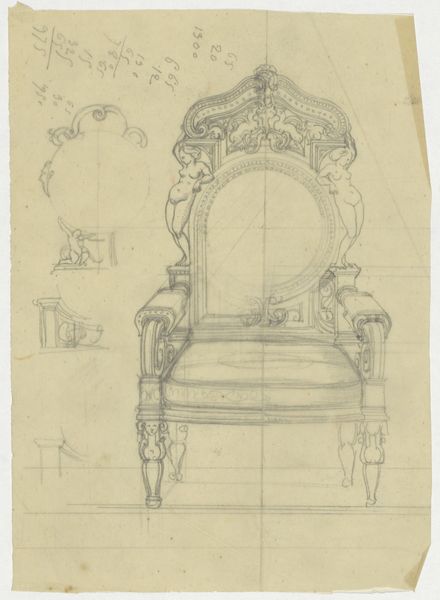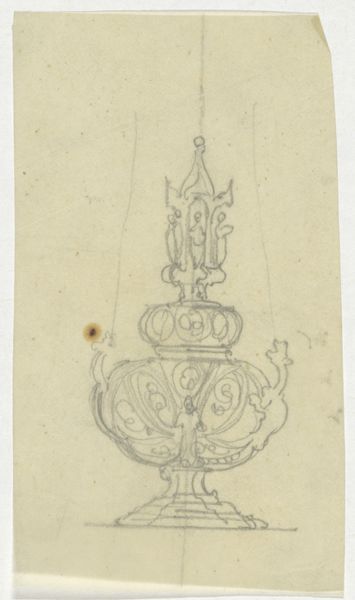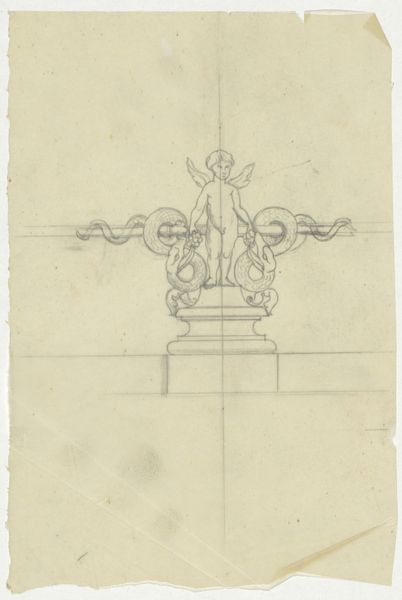
drawing, paper, pencil, architecture
#
drawing
#
toned paper
#
light pencil work
#
quirky sketch
#
paper
#
personal sketchbook
#
idea generation sketch
#
sketchwork
#
geometric
#
pencil
#
sketchbook drawing
#
watercolour illustration
#
storyboard and sketchbook work
#
sketchbook art
#
architecture
Dimensions: height 143 mm, width 228 mm
Copyright: Rijks Museum: Open Domain
Here we see a study of an architectural plan and bellows by Firma Feuchère, rendered in delicate pencil strokes. The bellows presents us with a potent symbol: at its apex, a figure resembling the crucified Christ, a symbol deeply embedded in centuries of religious and cultural consciousness. This motif echoes through time, recalling the sacrificial figures of antiquity—the dying god whose suffering promises renewal. Observe how, in other contexts, this symbol morphs. From the Orphic mysteries to Mithraic rituals, the theme of sacrifice and rebirth resurfaces, transformed yet resonant. The enduring power of this symbol lies in its ability to tap into our collective memory, engaging viewers on a visceral level. It’s an intense emotional state reflected in the image, a powerful force that speaks to our subconscious longings for redemption. This symbol progresses in a non-linear, cyclical manner, evolving and adopting new meanings across historical contexts.
Comments
No comments
Be the first to comment and join the conversation on the ultimate creative platform.


